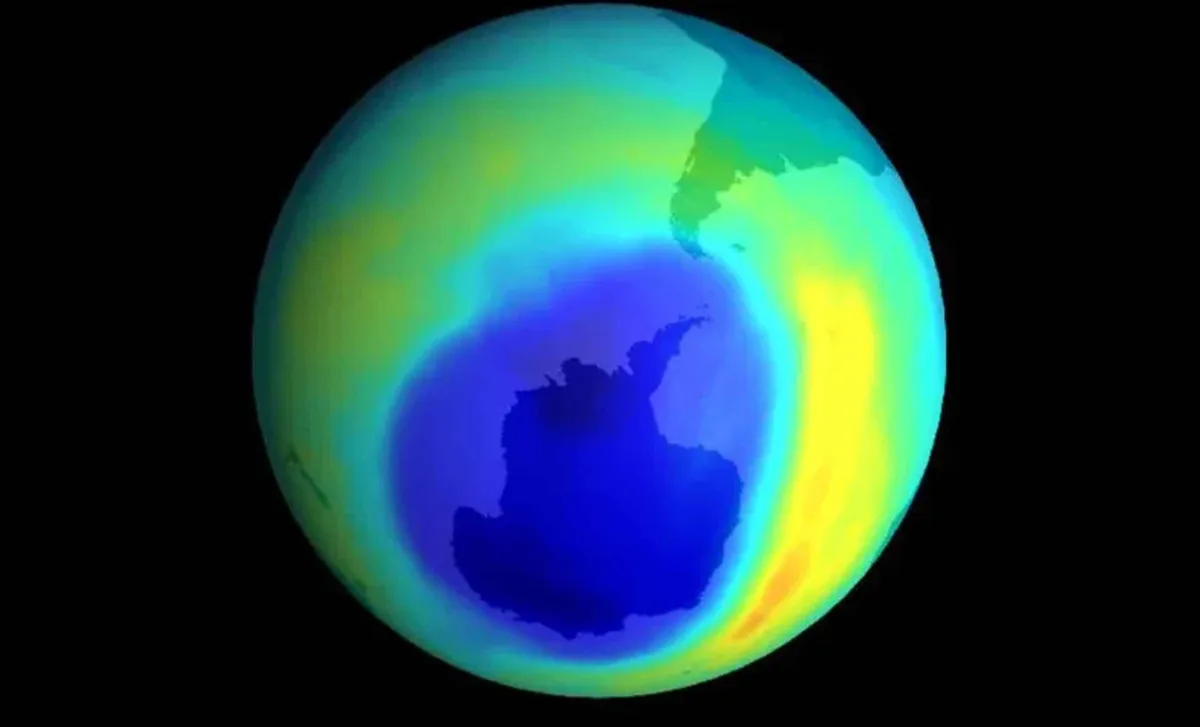
It has been 40 years since scientists revealed the shocking discovery of a large hole in the ozone layer above Antarctica. This significant finding ignited urgent global action to protect the planet’s fragile shield. The ozone layer, located in the stratosphere, serves as Earth’s natural sunscreen, absorbing harmful ultraviolet (UV) rays that can lead to severe health issues such as skin cancer, DNA damage, and cataracts, while also disrupting ecosystems. Recent research and insights from the British Antarctic Survey (BAS), the team behind this groundbreaking discovery, provide a detailed exploration of the history, causes, and current state of the ozone hole.
The ozone hole was first identified in 1985 by scientists at the British Antarctic Survey. Their research uncovered a dramatic thinning of the ozone layer over Antarctica, particularly during the Southern Hemisphere’s spring months, from August to October. This revelation sent shockwaves through the scientific community and policymakers globally. Dominic Hodgson, the interim director of science at BAS, referred to the discovery as “one of the most important environmental discoveries of the 20th century.” He emphasized how it showcased the power of “robust science, clear communication, and international cooperation” in addressing planetary threats.
Jon Shanklin, a lead scientist involved in the initial study and now an emeritus fellow at BAS, recalled the uncertainty surrounding the world’s response to their findings. The identification of the ozone hole prompted swift international action, culminating in the Montreal Protocol in 1987. This landmark treaty committed countries to freeze the production of ozone-depleting chemicals at 1986 levels and phase them out entirely. It is often celebrated as one of the most successful environmental agreements in history, significantly reducing emissions of chlorofluorocarbons (CFCs) and other harmful substances.
The ozone layer plays a critical role in protecting life on Earth by filtering out ultraviolet radiation. While the ozone layer is naturally replenished, it can be broken down by specific chemicals. The primary culprits responsible for the ozone hole are CFCs, which were extensively used in refrigeration, aerosols, solvents, and fire extinguishers. When CFCs reach the stratosphere, UV rays break them down, releasing chlorine and bromine atoms. These reactive atoms then interact with ozone molecules, leading to their breakdown. This destructive process occurs faster than the ozone can regenerate, resulting in a significant thinning of the layer.
The ozone hole typically forms every Antarctic spring when the region experiences extremely cold temperatures, creating polar stratospheric clouds. These clouds provide surfaces for chlorine and bromine reactions, accelerating ozone depletion. The hole reaches its largest and deepest extent by late September before healing during the summer months.
Despite ongoing efforts and international cooperation, the recovery of the ozone layer remains a gradual process. In an email to USA Today, Jon Shanklin explained that “the current rate of recovery is a bit slower than might be expected.” He suggested that this could be linked to interactions with climate change, indicating that the complexity of the climate system may be influencing the speed of ozone layer recovery. While the Montreal Protocol has effectively reduced emissions of ozone-depleting substances, many of these chemicals have atmospheric lifetimes exceeding 50 years. Therefore, even with no further emissions, a complete recovery of the ozone layer may not occur until after 2070.
The persistent presence of a large and deep ozone hole every Antarctic spring signifies that risks from ultraviolet radiation will continue for decades. Continuous monitoring and research are essential to understand how climate change feedbacks may be altering the ozone healing process.
The international response to the ozone crisis serves as a powerful example of what can be achieved when science, diplomacy, and policy converge. The Montreal Protocol has not only played a crucial role in protecting the ozone layer but has also prevented millions of cases of skin cancer and other health issues. Dominic Hodgson highlighted that the discovery and subsequent response demonstrate how “robust science, clear communication, and international cooperation can address planetary-scale threats.”
This success stands in stark contrast to the slower progress in tackling other pressing issues like climate change, biodiversity loss, and pollution control. Jon Shanklin noted the discrepancy, emphasizing that economic models influencing global resource use often overlook environmental costs, fueling many crises that could otherwise be avoided. The story of the ozone hole offers hope that coordinated, evidence-based action can significantly impact protecting Earth’s environment—provided the global community commits to similar resolve and cooperation in confronting other urgent challenges.